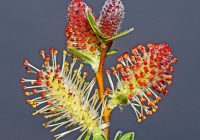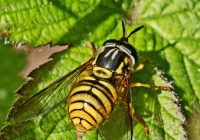Dr Phil Smith’s Wildlife Notes
April 2023
Met Office maps show that, while England had average or above average April rainfall, Merseyside was much drier than usual; it was also on the cool side. Formby had a mere nine days with measureable precipitation and only one properly wet day (10th). As a result, the sand-dune water-table fell by about 12 cm (5 inches). Nevertheless, conditions were nothing like as bad as the spring droughts of recent years.
On 1st of the month I headed to Sands Lake, Ainsdale, to check out the large flowering patch of yellow-flowered Alexanders that has attracted lots of insects in past years. I counted 20 of the common black-and-yellow-banded hoverflies known as Syrphs, heralding an incredible irruption of these insects along the coast, culminating in an estimated 2000 in an area of about 40 x 20 m at Ravenmeols on 22nd. The air was filled with their continuous humming. Pete Kinsella also reported thousands at Ainsdale NNR, while there were equally impressive numbers at other sites. Strangely, this seems to have been quite localised, with no similar reports in other parts of the country. The reasons for it are a mystery, though gardeners may benefit, as the larval stages of these hoverflies feed on greenfly. Sands Lake also produced an obscure fly that Phil Brighton identified as a Chalk Snailkiller. Its larvae feed on snails and it has a strong attachment to lime-rich places. Although the fly is widespread in the southern half of Britain, Sefton is its northern limit in the west. On another visit to Sands Lake, I was photographing a pair of Fold-winged Craneflies when a lady inquired whether I had found anything interesting. This led to the sale of a copy of my Insects of the Sefton Coast and a possible recruit for ‘buckthorn bashing’ in the autumn!
Early April is the time to look out for the Vernal Mining Bee (or Early Colletes), a solitary bee that nests in great numbers on south-facing dune slopes. The Devil’s Hole at Ravenmeols dunes is a prime location where an obliging pair posed for their close-up. This Red-listed bee was previously restricted to northwest England and Wales. However, it has recently turned up in southern England and is gradually moving north, these being thought to be new arrivals from continental Europe that may be genetically different from ours.
While searching the Ravenmeols woods for a rare hoverfly reported by Pete Kinsella, I found one of my favourites, the spectacular Buff-tailed Bear Hoverfly. This is a widespread but localised species of old woodland where its larvae develop in damp rotting timber. The amount of standing and fallen dead wood at Ravenmeols could be crucial for this and many other invertebrates that depend on this important habitat.
Sand-dune plants did not escape my attention during the month. I began a re-survey of one of our great rarities – Don’s Willow. There are 44 known bushes in Britain, of which 40 are in the Sefton dunes. The males have strikingly colourful catkins that are at their best in mid-April. Rachael Parks sent me details of a colony of Field Mouse-ear at Formby Point. Red-listed ‘Near Threatened’ in England, this plant is a duneland rarity, so I was particularly pleased to see a thriving colony. I also found several dense patches of the Red-listed Shepherd’s Cress on old mole-hills in Ainsdale NNR. This declining species depends on disturbed ground, being intolerant of competition from other plants.
My walks through the dunes were constantly accompanied by bird song; residents, such as Blackbird, Robin, Wren and the incredibly noisy Mistle Thrush, were accompanied by the glorious cadences of summer migrants like the Willow Warbler and Blackcap. Later in the month these were joined by the scratchy song of the Whitethroat and, at Sands Lake, Sedge and Reed Warblers. I also heard the high-pitched buzz of the Grasshopper Warbler at Hightown dunes. But is everyone aware of the fact that Britain has lost about 40 million song birds since 1970? A case in point is my ‘best’ bird of the month – a Cuckoo! On 22nd, I was at Ravenmeols, up to my neck in hoverflies, when I heard that familiar call to the south over Cabin Hill. Having been able to imitate the song since the age of 10, I soon had the male Cuckoo squawking angrily in a tree above my head. This harbinger of spring used to be a common bird; now I can go for several years without hearing one. Nationally, Cuckoos have declined by 65% since the early 1980s. Their demise could be linked to changes in the abundance of their main food – large moth caterpillars.
Finally, Trevor Davenport and I were at Ainsdale NNR on 20th when we bumped into Pete Kinsella. He showed us several hoverflies we would otherwise have missed, including the uncommon Northern Spearhorn and the tiny Gossamer Hoverfly. A bigger surprise, however, was a Blackcap briefly imitating a Nightingale! The bird must have picked up the song on passage in Southern or Eastern Europe. We were so taken by it that we almost missed a Brimstone butterfly hurtling past at high speed.






